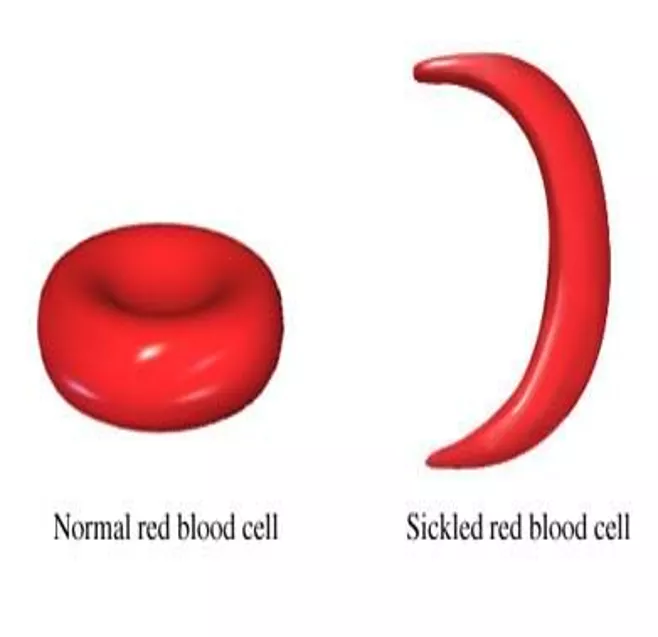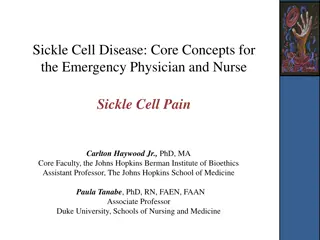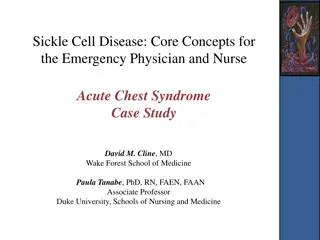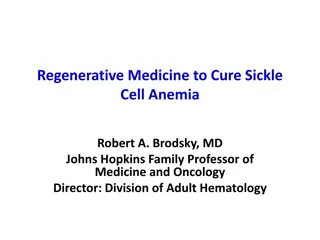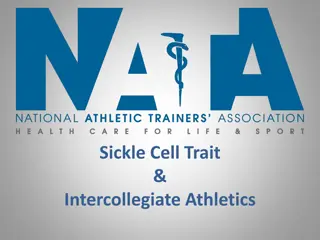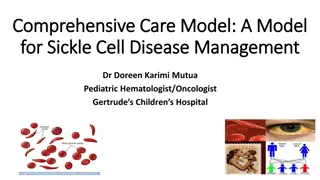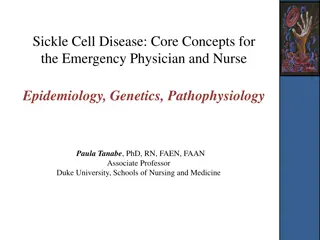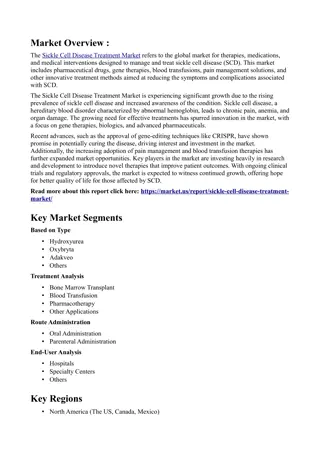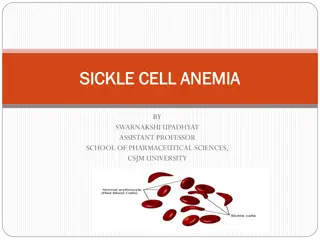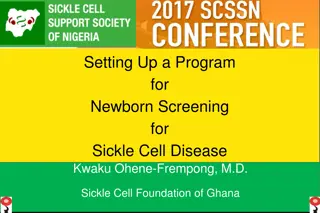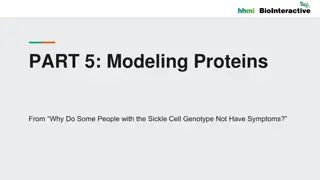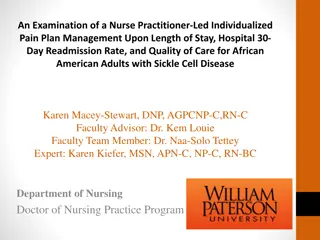SICKLE CELL DISEASE
Sickle Cell Disease, also known as drepanocytosis or sickle cell anemia, is a genetic blood disorder that affects the shape of red blood cells, leading to various symptoms and complications. It is inherited in an autosomal recessive pattern, with characteristic symptoms like sudden episodes of extreme pain, dizziness, fatigue, urinary problems, organ damage, and more. Diagnosis involves a blood test to examine the shape of red blood cells. Effective management and understanding of this disorder are crucial for individuals affected by it.
Download Presentation

Please find below an Image/Link to download the presentation.
The content on the website is provided AS IS for your information and personal use only. It may not be sold, licensed, or shared on other websites without obtaining consent from the author.If you encounter any issues during the download, it is possible that the publisher has removed the file from their server.
You are allowed to download the files provided on this website for personal or commercial use, subject to the condition that they are used lawfully. All files are the property of their respective owners.
The content on the website is provided AS IS for your information and personal use only. It may not be sold, licensed, or shared on other websites without obtaining consent from the author.
E N D
Presentation Transcript
SICKLE CELL DISEASE By: Xavier Amaro, Destynee Bodrick, Armaiyah Phelps, Anayeli Ortiz
BACKGROUND/DESTYNEE Sickle Cell Disease, also known as drepanocytosis or sickle cell anemia, is a genetic disorder. The sickle cell disease was named sickle cell because the red blood cells of patients look like sickles. James Bryan Herrick discovered sickle cells in 1910 in the United States while he and his friend, Doctor Ernest Irons, looked at a patient s red blood cells under a microscope. The patient had been experiencing much pain because his red blood cells were shaped in a sickle.
Infected sickle cell allele TYPE OF GENETIC DISORDER/XAVIER A a The type of genetic disorder of sickle cell disease is a blood disorder, since it affects the hemoglobin of red blood cells, which transports oxygen from the lungs to the whole body. The disease is inherited in an autosomal recessive pattern, meaning that the children won t inherit the disease unless each parents gives a recessive copy of a sickle cell gene. AA Aa A Aa aa a Infected sickle cell allele 25% chance of offspring having sickle cell disease
CHROMOSOME 11/XAVIER The sickle cell disease is carried on the 11th chromosome. It produces a different hemoglobin that causes red blood cells to be in the shape of a sickle.
SYMPTOMS/ANAYELI Sudden Episodes of Extreme Pain -The shape of the blood cell is a sickle so it can get stuck in small blood vessels, blocking them. This causes a lack of oxygen in organs, so the result is pain. Dizziness and fatigue- low oxygen in body causes the body to not function well Urinary problems-inability to make concentrated urine because of little blood in the urine Damage to organs and body pieces- low oxygen causes organs to break down
EFFECTS OF DISORDERS/ARMAIYAH Pain- clots of sickle cells can result in lack of oxygen in the blood vessel. Organ damage- organs get little to no oxygen, meaning that organ get damaged
DIAGNOSIS/DESTYNEE Sickle Cell Disease can be diagnosed by blood test of the individual with the disorder. Once the doctor gets the blood, he/she will look at the individual red blood cells. If the doctor sees a blood cell in a sickle shape, he/she will diagnose Sickle Cell Disease.
PROGNOSIS/XAVIER In 1973, the average lifespan for people with sickle cell disease was only 14 years. Currently, life expectancy for these patients can reach 50 years and over. The disorder impacts the patient mentally and physically. Since the cells block some blood vessels, it causes constant pain. Living with a lifetime of pain can be depressing. The disorders affects the family because the disease causes lack of oxygen. This makes the individual be short of breath and tire easily. This will limit the persons time outside and with his family.
TREATMENTS/ANAYELI Disorder Treatments Symptom Treatments A bone marrow transplant is a treatment. It includes the replacing of the infected bone marrow with healthy, non- infected bone marrow. After the bone marrow transplant, it allows the body to produce healthy, normal red blood cells. Fish oil- fish oil significantly reduces the frequency of sickle cell pain Folic Acid- treats certain types of anemia Pain Killers- Will reduce the pain that the patient suffers Gene therapy was discovered safe for treating sickle cell disease by researchers at UCLA.
CURRENT RESEARCH/ARMAIYAH Previously, the National Institutes of Health was looking into treatments for sickle cell disease. Treatments were discovered to be effective to the disease. As of 2016, there is no current research.
JAMES E. HAYES/DESTYNEE As a child my father ached but no one knew why. When he became a man and medical technology improved, it was discovered he had sickle cell. I can remember many sleepless nights watching my father crying and tossing and turning in pain. He grew up owning his own family business called Poorboys Supermarket which he ran until his death in 1983. He leaves behind 3 daughters, 3 sons, 11 grandchildren, and 1 great grandson. -From the words of Ms.Kathy-Hayes
BIBLIOGRAPHY -Chien-Kuang Ding - Guest Lecture - Duke University: Genetics Outreach - Durant Road Middle School - February 23rd, 2016 -Stem Cell Transplant for Sickle Cell Disease -WebMD http://www.webmd.com/cancer/bone-marrow-transplant-for-sickle-cell-disease -Sickle Cell Warriors - UCLA Stem Cell Gene Therapy for Sickle Cell Disease Advances toward Clinical Trials - Sickle Cell Foundation of Georgia, Inc. - Sickle Cell Foundation of Georgia Inc - http://sicklecellga.org/ucla-stem-cell-gene- therapy-for-sickle-cell-disease-advances- toward-clinical-trials/ -Sickle Cell Free, Part 1: An Interview with Patient #19 - http://sicklecellwarriors.com/sickle-cell-free-an-interview-with-patient-19-pt-1/ -What Are the Signs and Symptoms of Sickle Cell Disease? - NHLBI, NI - http://www.nhlbi.nih.gov/health/health-topics/topics/sca/signs
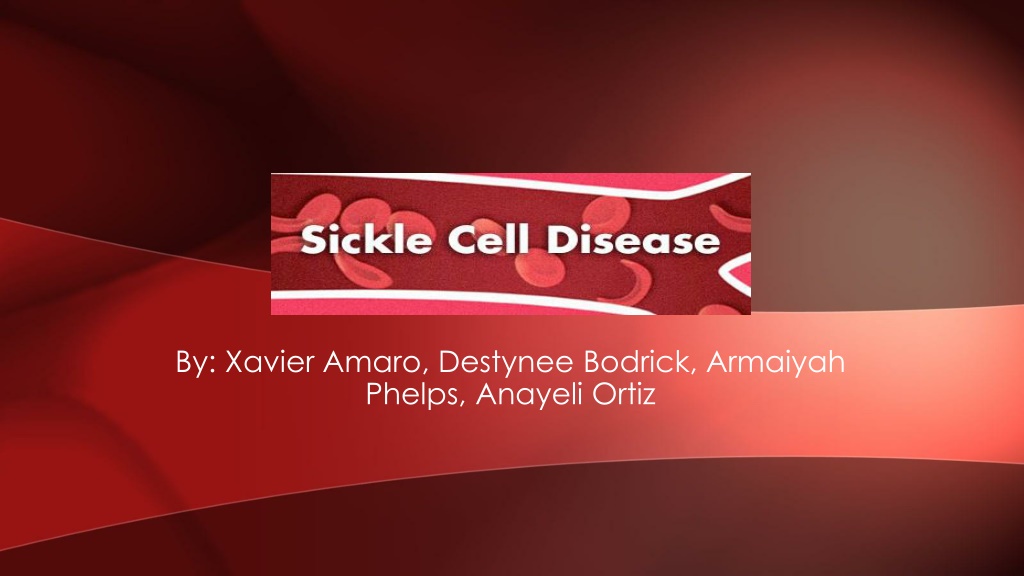
 undefined
undefined

